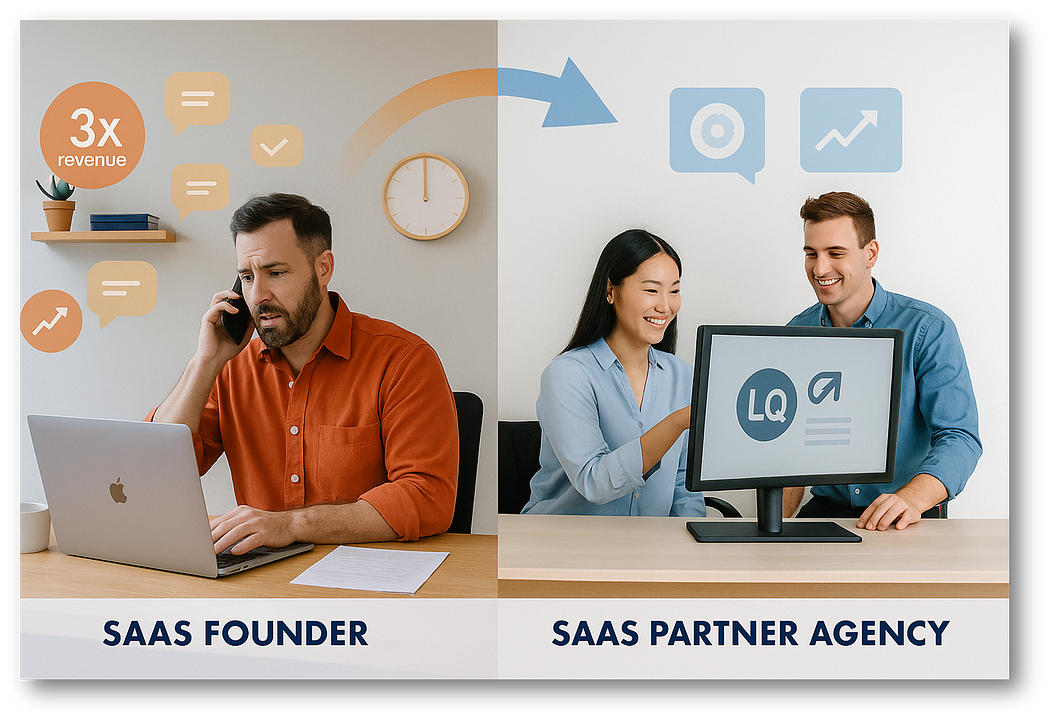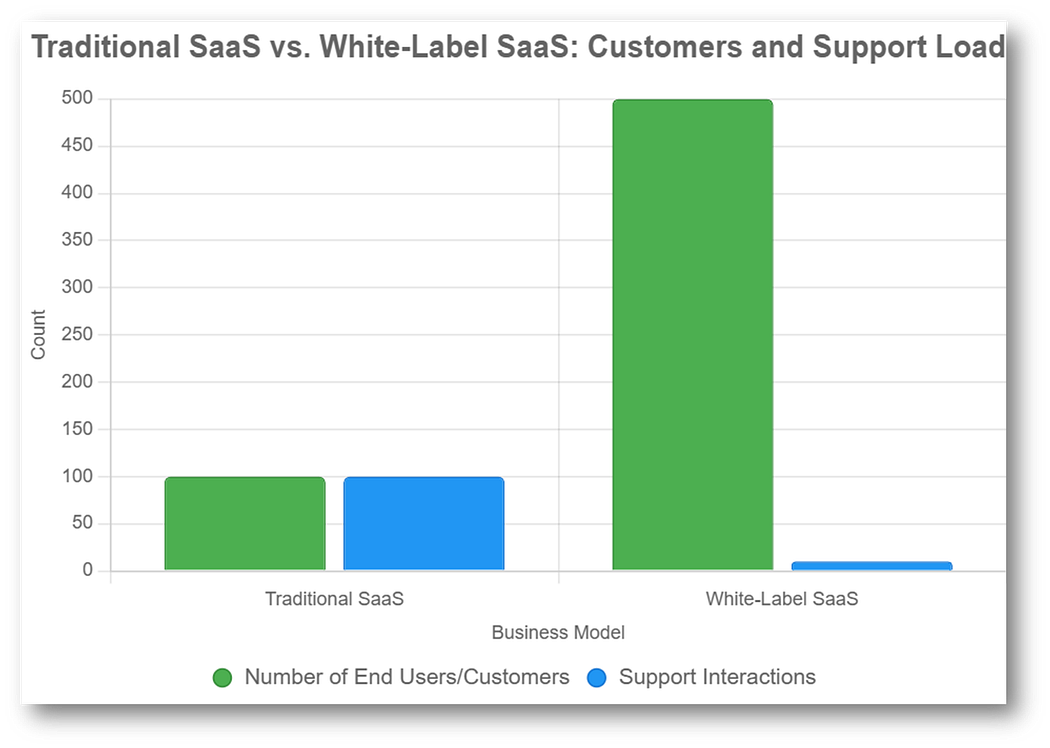Sonu Goswami (SaaS content writer B2B) White-Label SaaS: One Product, Many Customers
Posted / Publication: Medium — White-Label SaaS: One Product, Many Customers
Day & Date: October 7, 2025
Article Word Count: 1,650 words
Article Category: SaaS Growth · White-Label Strategy · Product Scalability
Article Excerpt / Description: In this post, Sonu Goswami, a SaaS content writer and B2B specialist, explains how founders can scale faster through white-label SaaS partnerships — letting agencies and businesses rebrand your product and sell it as their own. Featuring examples from Stripe, Twilio, and Zendesk, this guide shows how white-labeling can 3x your revenue without tripling your team, reduce churn, and build recurring income from a single codebase.
Author: Sonu Goswami — SaaS Content Writer | B2B Specialist

Stuck selling to one customer at a time? White-labeling lets other businesses rebrand your SaaS and sell it for you. Here’s the playbook.
Your product works. People are actually buying it. But here’s where it gets frustrating — you’re basically stuck doing the same thing over and over. Another demo. Another trial. Another contract negotiation. Your sales team is running at full capacity and you’re thinking, “maybe we need more reps?” Then you look at the numbers and realize a new salesperson won’t even break even for half a year, maybe longer.
There’s another way to grow that most founders miss entirely.
Instead of selling to end users, what if you sold to companies who’d rebrand your product and sell it themselves? You build it once. They slap their logo on it. Their customers think it’s theirs. You collect checks from multiple partners instead of hunting down individual buyers.
That’s white-labeling. And it’s working for way more companies than you’d think.
Why this makes sense for your business
The problem with traditional SaaS sales is you’re doing everything yourself. Marketing, sales, onboarding, support — it all falls on you. With white-labeling, your partners do most of that work.
Here’s what changes:
You stop paying for the same development twice. Here’s the reality most founders don’t talk about. You’ve got maybe 100 paying customers. On paper that looks decent. But then Monday morning hits and your inbox is flooded. Customer A wants this feature modified. Customer B doesn’t understand why the dashboard works this way. Customer C is threatening to churn because something broke during the last update.
It never stops.
Press enter or click to view image in full size

Now imagine a different setup. Instead of managing 100 individual customers, you’ve got 10 agency partners. Each agency brings their own 50 clients to your platform. You’re actually making more money now — 500 end users instead of 100. But here’s the kicker: you’re not answering 500 support emails. You’re talking to 10 people. Those 10 agencies deal with their clients’ problems. You just keep the platform running and support the agencies when they need you.
Completely different game.
Churn drops because switching costs go up. When a business builds their entire service offering around your product, they can’t just leave next quarter. Their reputation is tied to it. Their clients know it as theirs. That’s stickiness you don’t get with month-to-month subscriptions.
Revenue compounds without you doing more work. Once the white-label infrastructure is built, adding new partners doesn’t really increase your overhead much. You’re not scaling your support team linearly with revenue anymore.
Who’s actually doing this
Stripe isn’t just a payment processor you sign up for directly. Companies like DoorDash and Shopify built their entire checkout experiences on Stripe’s rails. Their customers have no idea Stripe is under the hood. Stripe handles billions in transactions from businesses that present it as their own payment system.
Twilio does something similar with communications. You’ve probably gotten SMS notifications from apps that feel custom-built, but thousands of them are just using Twilio’s APIs white-labeled. The app gets credit for “their” messaging feature. Twilio gets paid per message sent.
Or look at Zendesk. Walk into any company’s help center and it might look completely unique — custom colors, their branding everywhere, totally integrated into their site. But if you dig into the code or check the footer, you’ll probably find Zendesk sitting there. Something like 200,000+ companies are using it, and I’d bet most of their end users have no clue.
Should you actually consider this?
Look, white-labeling isn’t some magic solution for every SaaS out there. If every customer needs you to build custom features or tweak workflows just for them, this model falls apart pretty quick.
What works better is when your product does roughly the same thing for everyone, and the main difference is just logos, colors, maybe some light configuration. That’s when white-labeling actually makes sense instead of becoming a nightmare to maintain.
But if agencies keep asking whether they can resell your tool, pay attention. If you’re turning down partnership opportunities because your product isn’t set up for it, that’s money you’re leaving on the table.
The trick is validating demand before you rebuild everything for multi-tenancy. Don’t just assume this will work for you. Go talk to a few companies that might actually want to partner. What would they need from you? What’s a realistic price they’d pay? What’s stopping them from just saying yes right now? Is it price? Is it because they think building it themselves would be easier? Or maybe there’s already a competitor they’re looking at?
You’ll figure out real quick if this is actually viable or if you’re just excited about an idea that doesn’t have legs. Most founders skip this step and regret it six months in.
Because here’s the thing — white-labeling done right can 3x your revenue without tripling your headcount. Done wrong, you’ve just built a complicated version of your product that nobody asked for.
Figure out which one you’re walking into before you commit.
I write about SaaS growth strategies twice a week. If you’re building in the SaaS space and want to compare notes on what’s actually working, feel free to connect.
A message from our Founder
Hey, Sunil here. I wanted to take a moment to thank you for reading until the end and for being a part of this community.
Did you know that our team run these publications as a volunteer effort to over 3.5m monthly readers? We don’t receive any funding, we do this to support the community. ❤️
If you want to show some love, please take a moment to follow me on LinkedIn, TikTok, Instagram. You can also subscribe to our weekly newsletter.
And before you go, don’t forget to clap and follow the writer️!

